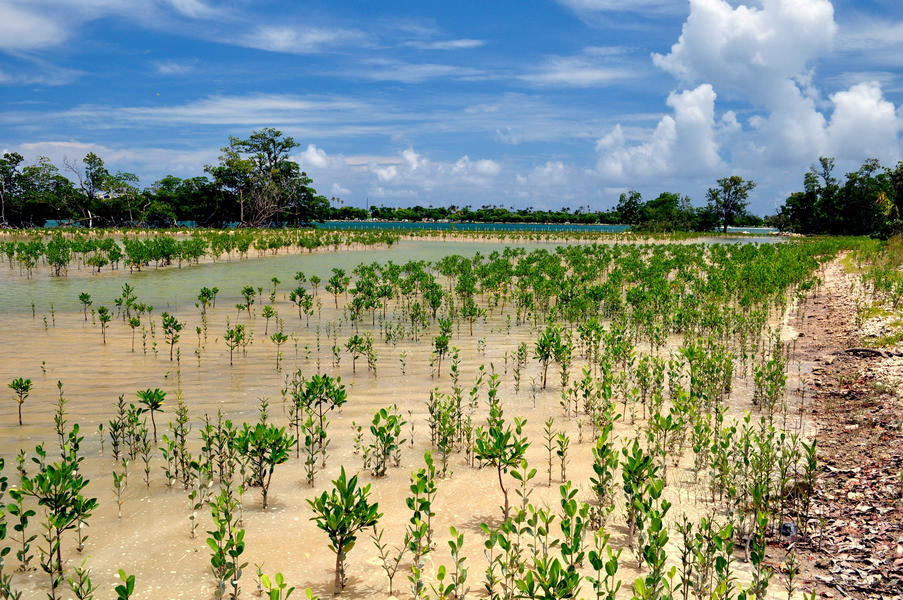Historical Background
After Florida became a U.S. territory in 1821, permanent European settlements in South Florida were developed. William English established a plantation with slaves in 1844 on the north bank of the Miami River. During the second and third Seminole Wars, his plantation was occupied by the U.S. Army, which used the buildings for its headquarters, naming it Fort Dallas. Julia Tuttle saw the potential of Fort Dallas and convinced Henry Flagler to extend the Florida East Coast Railway to Fort Dallas, in exchange for parcels of her land to construct a hotel. Through this exchange, Flagler built the Royal Palm Hotel on the northern bank of the Miami River, as it empties into Biscayne Bay. Settlement of the shoreline of Biscayne Bay increased after the arrival of Flagler's railroad, which led to the incorporation of the City of Miami in 1896.
Physical Features
Biscayne Bay, Card Sound and Little Card Sound were formed 3,000 to 5,000 years ago as sea level rose. These waterbodies are located between mainland Miami-Dade County and Monroe County and the barrier islands that separate the bay from the Atlantic Ocean. Historically, Biscayne Bay received freshwater from various kinds of streams although the channelization of natural tributaries and creation of canals severely altered the location, timing and delivery of freshwater to the bay. These freshwater streams are still there or exist in a modified form even if almost none continue to flow naturally. Natural streams include Snake Creek (Oleta River lying downstream), Arch Creek (comprised of two creeks), Little River, the Miami River and Black Creek.
Archaeological Resources
Prehistoric settlements along the shores of Biscayne Bay were established by the Tequesta Native American tribe of the Glades and Archaic cultures. Middens of rock or shell, burials, and other sites have been found along the Miami River and Biscayne Bay's shore. The Miami Circle is the most significant site that documents the Tequesta and contains limestone rocks, black midden, soil, animal bones, marine shells, and some artifacts.
Natural Communities
A multitude of marine and estuarine natural communities can be found within the Biscayne Bay Aquatic Preserves, including seagrass beds, mangrove swamps, salt marshes, consolidated and unconsolidated substrates, sponge beds, algal beds, worm reefs and others.
Native Species
The rich fauna found in Biscayne Bay results from the diverse habitats found in the bay. Scientists have documented more than 500 species of fish and 800 species of invertebrates. These include several species of shark such as the bonnethead shark, nurse shark and bull shark. Biscayne Bay is also home to many bird species, such as herons, egrets and spoonbills, which may wade in the shallows, feeding on the fish and invertebrates.
Listed Species
Biscayne Bay is home to more than 170 species that have been determined to be in danger of extinction, including the Florida manatee, wood stork, American crocodile and several species of sea turtles. Johnson's seagrass, the only listed marine plant, can also be found in the northern stretches of Biscayne Bay.
Invasive Species
South Florida is particularly vulnerable to invasive species because it is in a transitional zone between temperate and tropical climates. Non-native invasive species of the Biscayne Bay Aquatic Preserves include plants such as Australian pine, Brazilian pepper and wildlife such as the red lionfish and several mollusk species.


